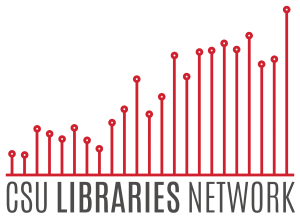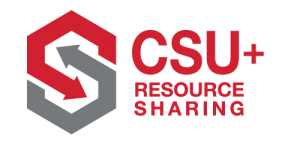Elsevier FAQs
The situation: It is time for the California State University Libraries to renew their contract with Elsevier, one of the world’s largest scientific, technical, and medical information publishers. Elsevier provides libraries with bundles of online journal subscriptions via its ScienceDirect platform.
CSU’s Elsevier subscription (a bundled package known in the industry as a Big Deal) is purchased through the Chancellor’s Office (CO). The subscription package includes 1,441 current journal titles of the 3,412 that Elsevier markets. Additionally, to support local needs, some libraries supplement this Big Deal with additional subscriptions to Elsevier journals not included in the CO Bundle.
Do CSU faculty and researchers use all the titles in the CSU subscription?
No. Most CSU campuses have downloaded zero articles from many Elsevier journals. The majority of CSU campus users download articles that we purchased in prior years. Fewer than 25% of downloads are from current materials. A good analogy is cable television where subscribers pay for channels they never watch.
Why is this a problem?
Like other publishing platforms, Elsevier has built a business model underwritten by publicly-funded research, faculty scholarship, faculty peer review, and faculty editorial board management. Elsevier then charges libraries annual or multiyear subscription fees to buy access to journals that exist only because of the public research funding and faculty work effort. This business model has rewarded Elsevier with a profit margin reported at 36% — higher than Apple, Google, or Amazon reported for the same year.
This profit margin has been sustained by the steady increase in subscription rates charged to academic libraries. According to the American Library Association, “Rapidly rising journal subscription prices have severely eroded the ability of libraries, universities, and scholars to purchase the publications necessary for research and education. While the Consumer Price Index (CPI) increased 73% between 1986-2004, research library expenditures for serials increased 273%. Since then, annual price index reports by the trade magazine Library Journal document the continued inexorable increase in serials costs, almost always in excess of the CPI.”The relentless rise in subscription costs for Elsevier and other online journal bundles has serious ramifications. The escalating costs mean that over time, CSU libraries have purchased fewer titles, greatly hampering the ability of the libraries to support emerging fields and inhibiting a diverse representation of ideas and research. Less access to research is bad for science. For more insight into the current landscape of academic publishing, see the free documentary, Paywall: The Business of Scholarship.
How much does Elsevier charge CSU libraries for their subscriptions?
In 2019, Elsevier charged the CSU system $3,949,602 for its subscription to current journals in ScienceDirect, a 4.25% increase over the previous year. Elsevier subscription costs are shared among the CSU libraries and comprise a significant portion of the annual acquisitions budget for every library in the system.
Do CSU faculty publish with Elsevier?
Yes. According to ScienceDirect, CSU authors published 8,680 articles in Elsevier journals from 2010 to 2019.
Are CSU authors charged a fee for publishing Open Access articles in Elsevier journals?
Some faculty want the articles they write to be available for free, that is via open access, instead of behind a subscription paywall. To make an article available via open access, Elsevier imposes an Article Publishing Charge (APC) of approximately $3,000 (depending on the journal) on authors. Under the APC model, Elsevier profits, in effect, twice from publicly-supported educational institutions by (1) charging for subscriptions which limit access to these journals to subscribers and (2) imposing APCs that authors or other funders pay if they seek to make their research publicly available.
In 2018, CSU authors published approximately 1,100 articles in Elsevier journals. Only a small number of these articles were published as open access. Collectively, it would have cost the CSU system approximately $3.3 million to make all of the Elsevier articles published by CSU authors freely available to all readers—even though, in many cases, the articles were funded by public research grants and written and edited by faculty at publicly-supported universities. These APC costs would have been on top of annual subscription fees paid by the CSU for access to ScienceDirect.
What can we do about this?
We can use the collective power of the CSU system to negotiate a better deal for our faculty and students. The University of California libraries were able to take a strong negotiating position with Elsevier because the UC Faculty supported their libraries. If the CSU Faculty likewise support the possibility that the CSU Libraries could walk away from the Elsevier contract, we are then in a strong negotiating position with Elsevier. We can push Elsevier hard for a transformative agreement that reduces subscription costs, limits annual price increases, and moves toward a model that allows CSU authors to make their work more widely available in open access.
What can YOU do about this?
Are you willing to support the CSU Libraries? This may mean the CSU Libraries will refuse to pay subscription costs for overpriced journals and databases until we can come to a more conducive agreement. The UCs ended their negotiations with Elsevier. In the aftermath, the UC libraries successfully negotiated a transformative, open-access, agreement with Cambridge University Press in which the universities will see no significant overall increase to the cost of its contract. In the Cambridge agreement, UC faculty retain their copyright, and UC faculty will have the option of publishing their articles open access with APCs subsidized either by faculty from their grant funding or by the UC libraries.
The impact of the CSU walking away from renewing with Elsevier would be largely limited to losing access to future publishing. Because the CSUs paid for “perpetual rights” in previous contracts, we retain perpetual access to most of the Elsevier articles to which we had access under those contracts. CSU faculty, students, and staff still have access and can download those articles.
We have the potential to change the power dynamics, to give faculty rights to what they have authored, and to ensure that taxpayers and citizens all over the world have access to scholarly research. All we ask is that our faculty support us as we begin an honest and difficult conversation with a company that cares more about its bottom line than it does about making knowledge open and available to all.
Read More

